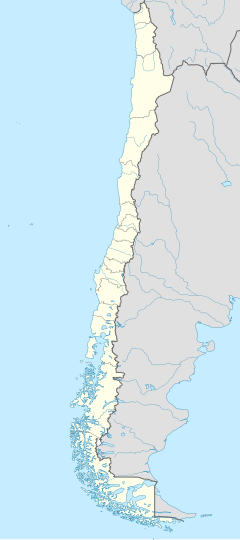Provincia de Chiloé
Utseende
| Chiloé | |||
|---|---|---|---|
| Provincia de Chiloé | |||
| Land | |||
| Region | Los Lagos | ||
| Hovedstad | Castro | ||
| Areal | 9 181,6[1] km² | ||
| Befolkning | 168 185 (2017[2]) | ||
| Bef.tetthet | 29,34 innb./km² | ||
| Høyde o.h. | 174 meter | ||
| Nettside | www | ||
 Provincia de Chiloé 42°30′S 74°00′V | |||
Chiloé er en provins i den chilenske regionen Los Lagos. Provinsen omfatter Chiles største øy Chiloé. Provinshovedstaden er Castro. Provinsen dekker et areal på 9 18,6 km² og har 168 185 innbyggere (2017).
Kommuner i provinsen Chiloé
[rediger | rediger kilde]Provinsen består av ti kommuner:[2]
Verdensarv
[rediger | rediger kilde]I 2000 ble de rundt 70 unike trekirkene på øyene i provinsen ført opp på UNESCOs Verdensarvliste.[3]
Referanser
[rediger | rediger kilde]- ^ «Territorial division of Chile» (PDF) (på spansk). Instituto Nacional de Estadísticas. 2007. ISBN 978-956-7952-68-7. Arkivert fra originalen (PDF) 11. desember 2017. Besøkt 24. mai 2018.
- ^ a b Censo 2017 - Todos Contamos www.censo2017.cl
- ^ «Churches of Chiloé». UNESCO. Besøkt 1. april 2022. «In the Chiloé archipelago off the coast of Chile are about 70 churches built within the framework of a “Circular Mission” introduced by the Jesuits in the 17th century and continued by the Franciscans in the 18th and 19th centuries. The most exceptional illustrations of this unique form of wooden ecclesiastical architecture (the so-called Chilota School of architecture) are the churches of Achao, Quinchao, Castro, Rilán, Nercón, Aldachildo, Ichuac, Detif, Vilupulli, Chonchi, Tenaún, Colo, San Juan, Dalcahue, Chellín and Caguach. These sixteen churches are outstanding examples of the successful fusion of European and indigenous cultural traditions. The abilities of the people of Chiloé as builders achieved its highest expression in these wooden churches, where farmers, fishermen and sailors exhibited great expertise in the handling of the most abundant material in this environment, wood. Along with the churches, the mestizo culture resulting from Jesuit missionary activities has survived to the present day. | This isolated archipelago was colonized by the Spanish in the mid 16th century. The Jesuits, who arrived in 1608, used a circulating missionsystem in their evangelization of the area: religious groups made annual tours around the archipelago, staying for a few days at locations where churches were erected jointly with the communities of believers. The rest of the year a specially trained layperson attended the spiritual needs of the inhabitants.»
Eksterne lenker
[rediger | rediger kilde]Denne artikkelen er en spire. Du kan hjelpe Wikipedia ved å utvide den.

